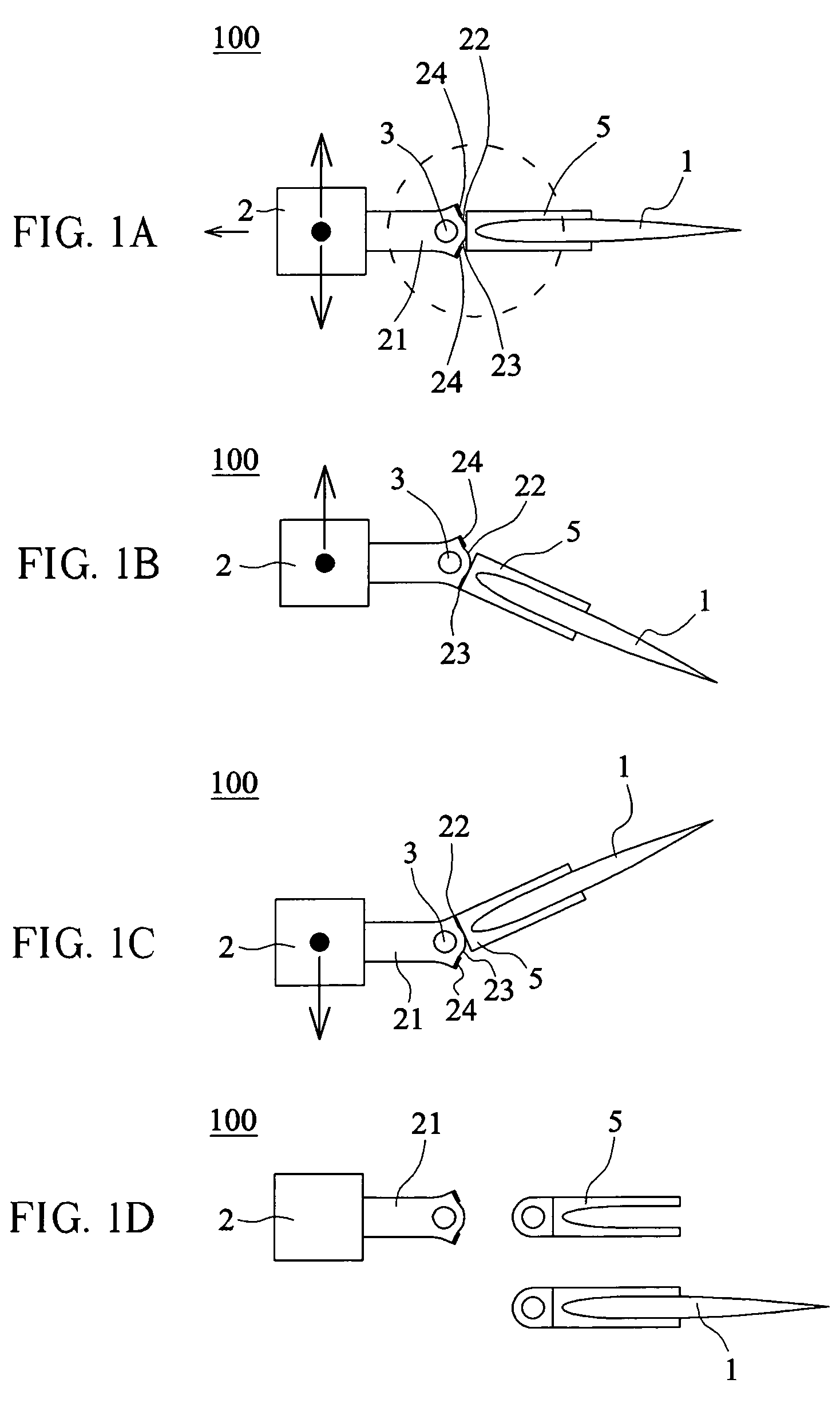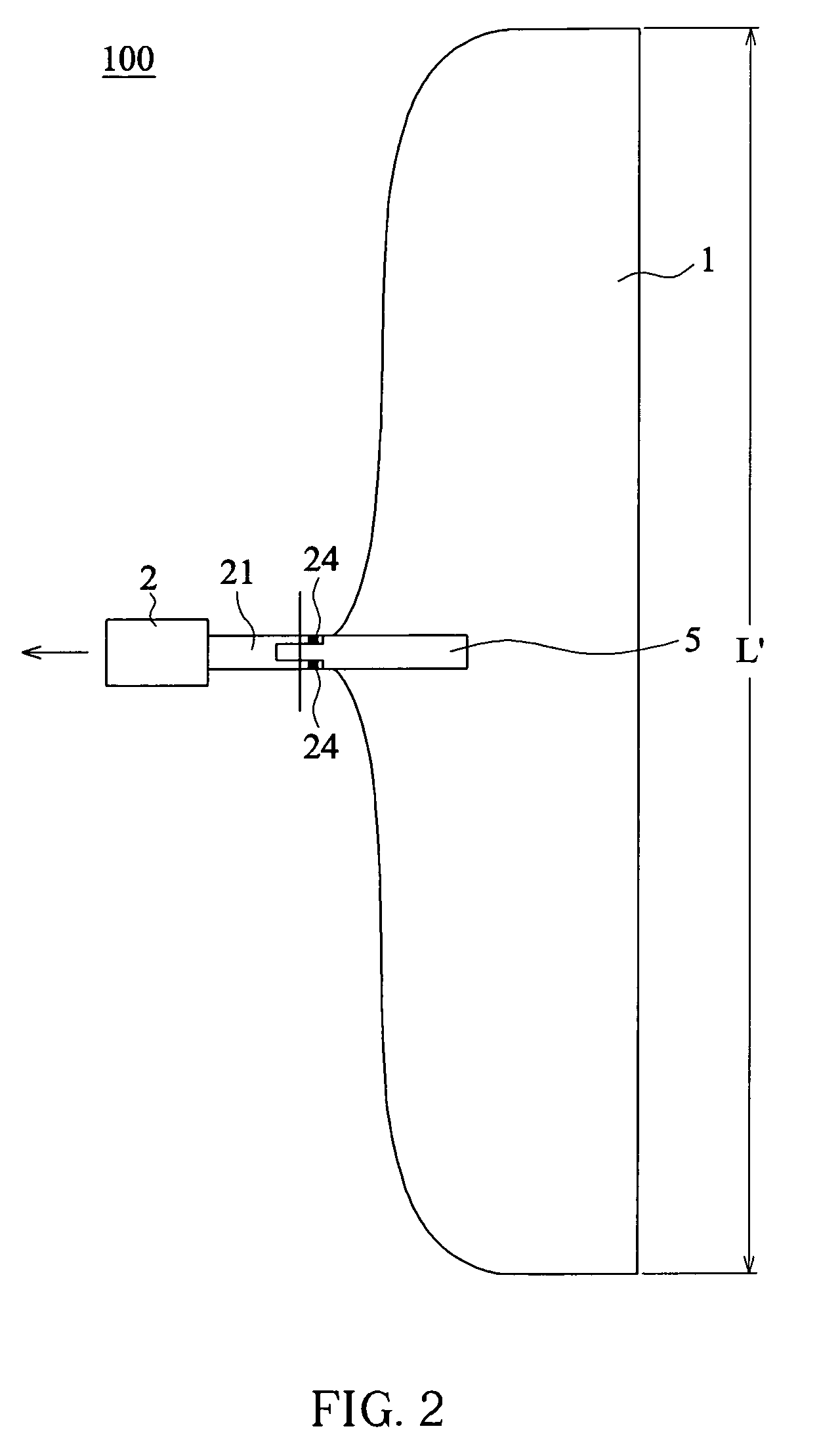Oscillating-foil type underwater propulsor with a joint
a technology of underwater propulsor and joint, which is applied in the field of underwater propulsor, can solve the problems of inferior device for lifting and taking load, inability to take or transmit a larger thrust, and early flow separation and stall, so as to improve the propulsion efficiency and maneuverability of the propulsor
- Summary
- Abstract
- Description
- Claims
- Application Information
AI Technical Summary
Benefits of technology
Problems solved by technology
Method used
Image
Examples
Embodiment Construction
[0029]To increase the propulsion efficiency and maneuverability of a moving underwater object or a floating body, the invention has the following improvements.
1. Underwater Propulsion by Use of an Oscillating Foil
[0030]The invention provides a streamline foil undergoing heaving motion and pitch variation to mimic tail movement of a cetacean swimming at high speed. The oscillating foil pushes water backwards to gain a forward thrust. Thus, propelling in this way avoids rotational energy loss associated with rotating motion of a conventional screw propeller. This type of propulsion has a higher propulsion efficiency than that of a screw propeller.
2. Foil Pitch Control with a Joint
[0031]To obtain an effective thrust, a foil undergoing heaving motion needs to have appropriate pitch angle variation associated with the motion. The invention provides an underwater joint that enables the foil pitch angle to be self-adjusted by using the variation of fluid dynamic lift acting on the foil and...
PUM
 Login to View More
Login to View More Abstract
Description
Claims
Application Information
 Login to View More
Login to View More - R&D
- Intellectual Property
- Life Sciences
- Materials
- Tech Scout
- Unparalleled Data Quality
- Higher Quality Content
- 60% Fewer Hallucinations
Browse by: Latest US Patents, China's latest patents, Technical Efficacy Thesaurus, Application Domain, Technology Topic, Popular Technical Reports.
© 2025 PatSnap. All rights reserved.Legal|Privacy policy|Modern Slavery Act Transparency Statement|Sitemap|About US| Contact US: help@patsnap.com



